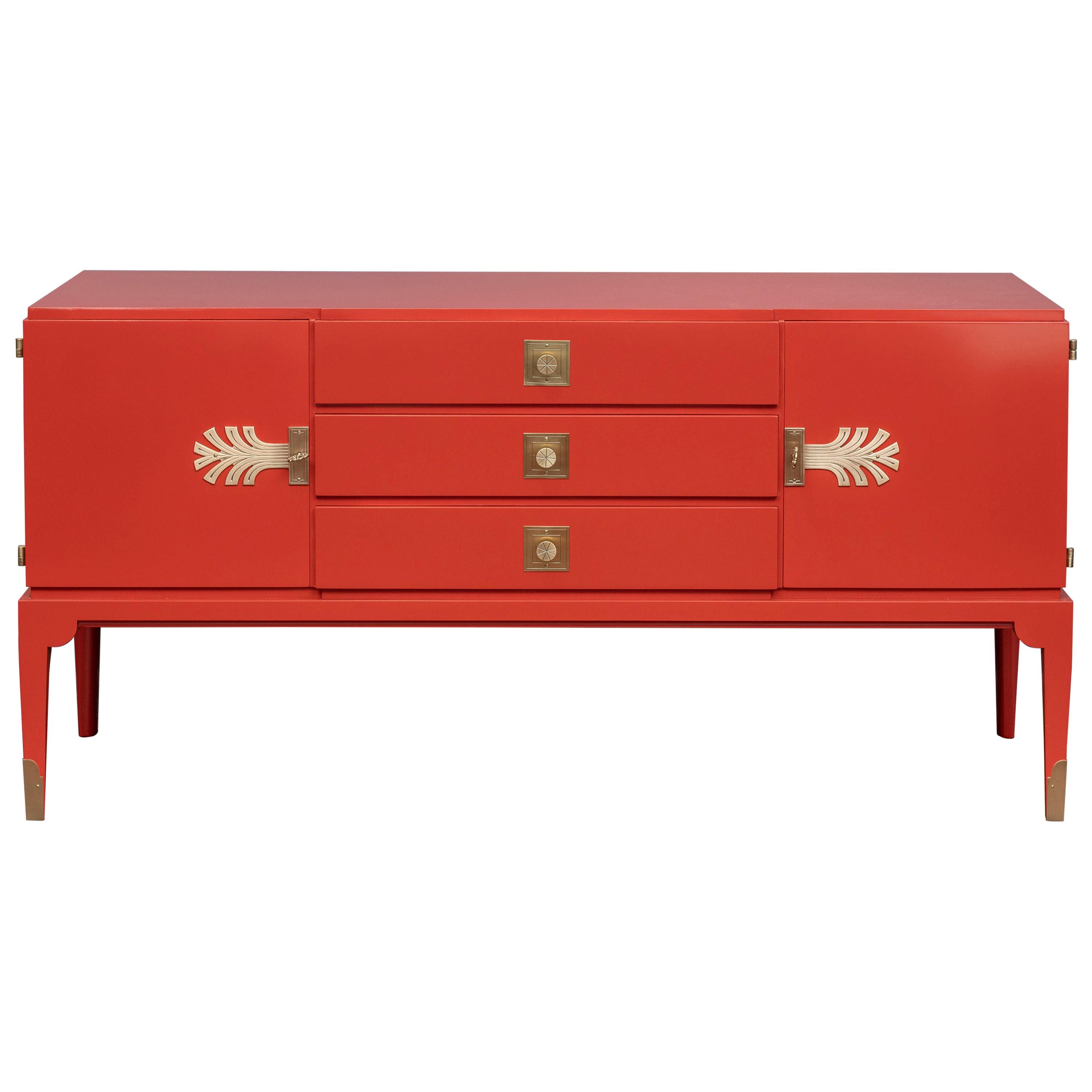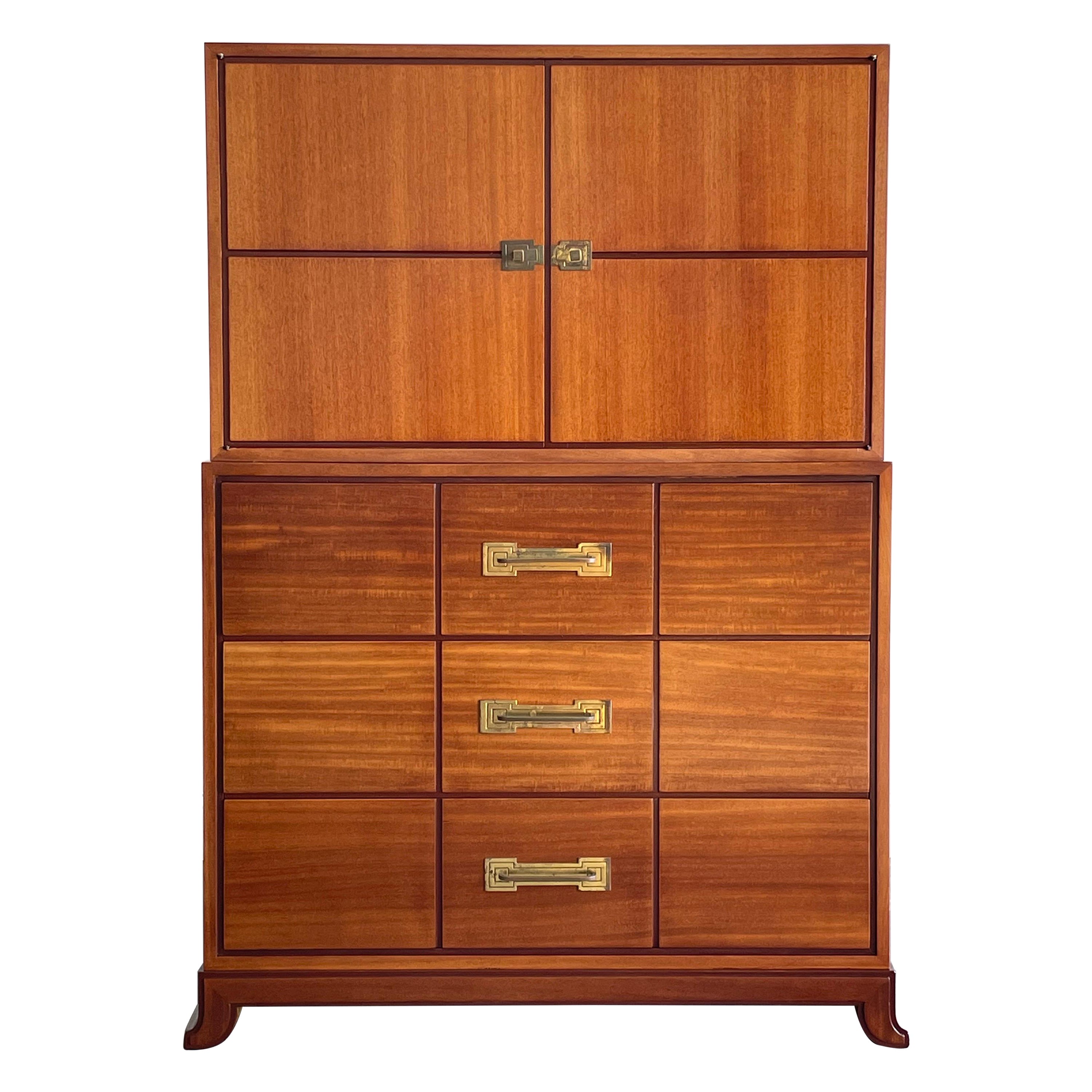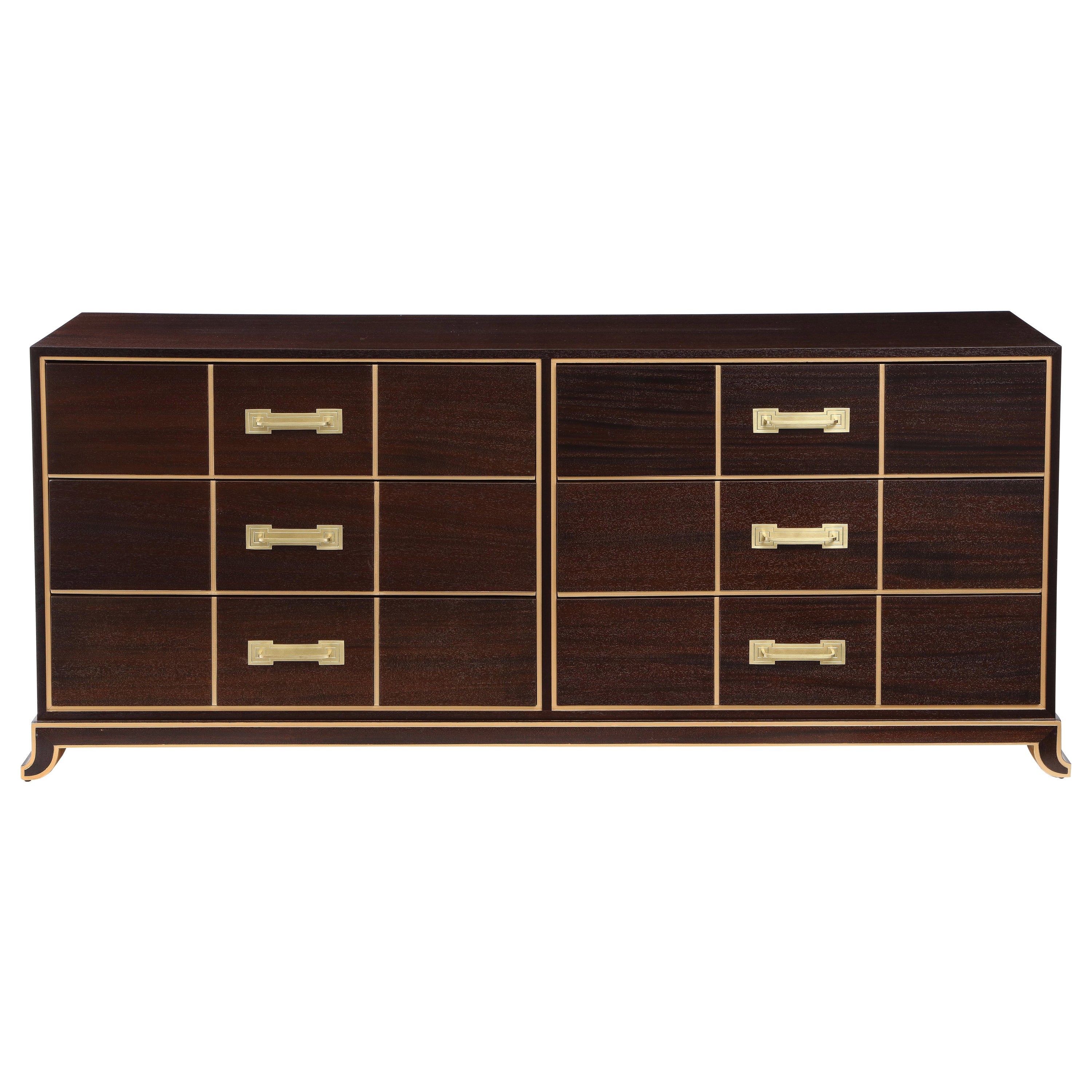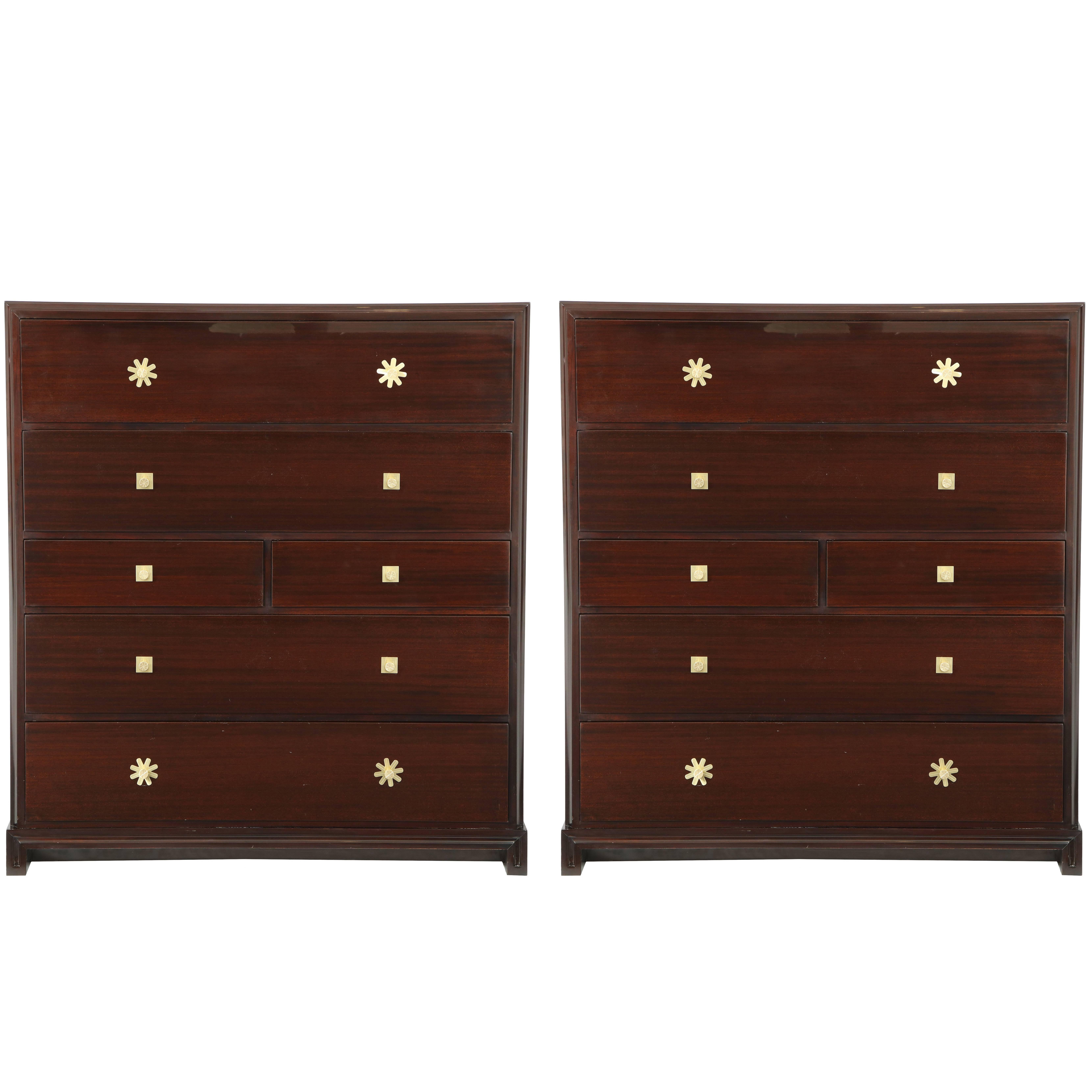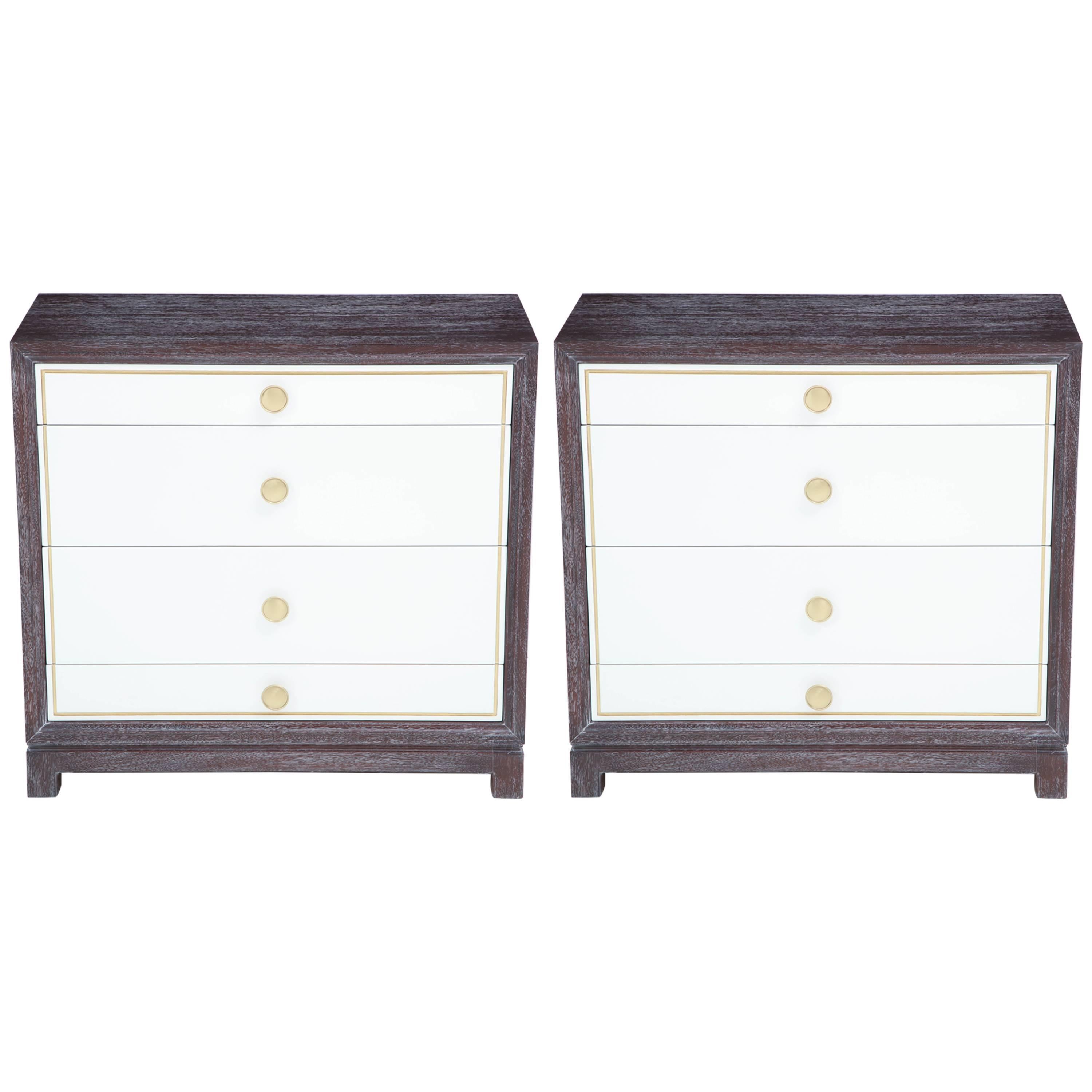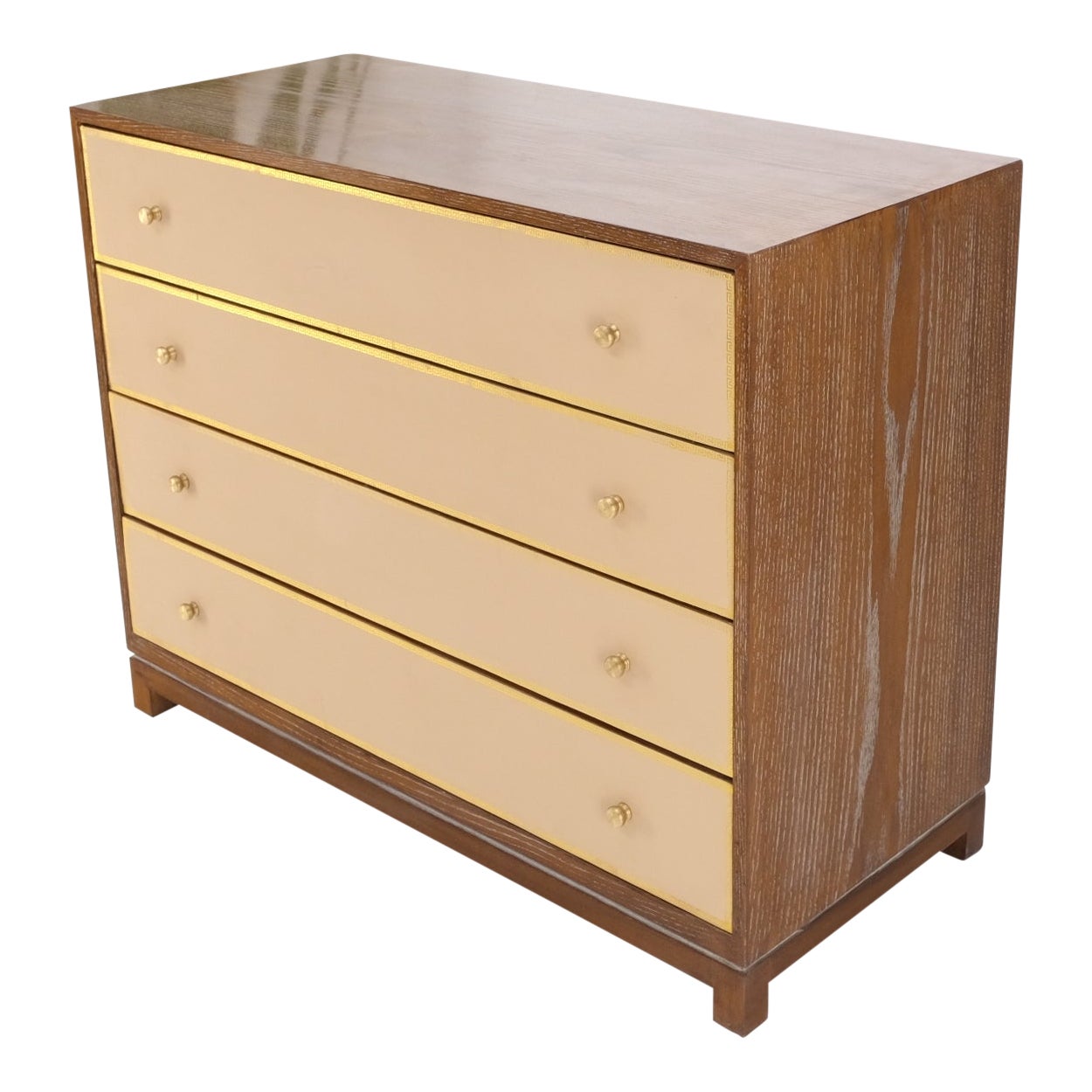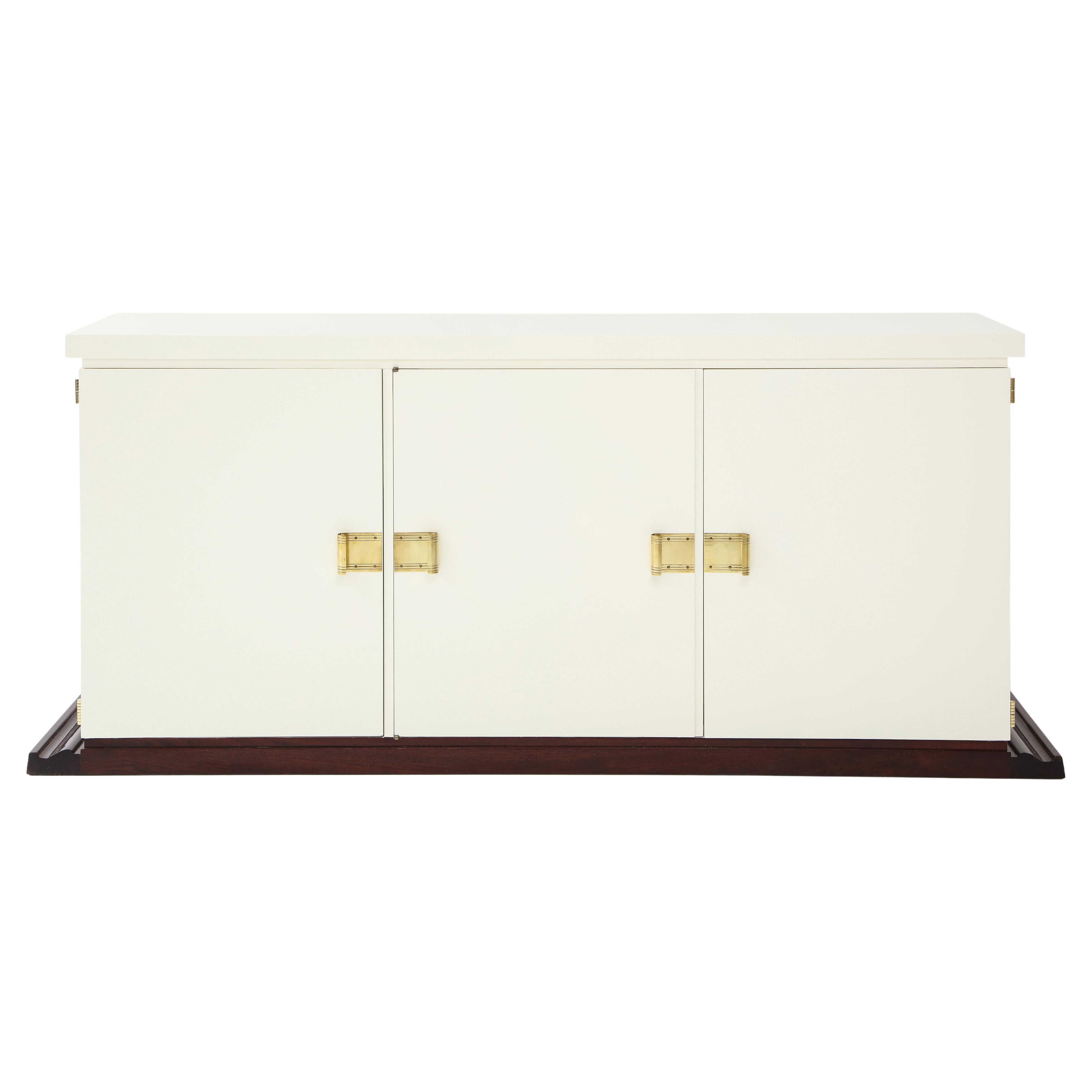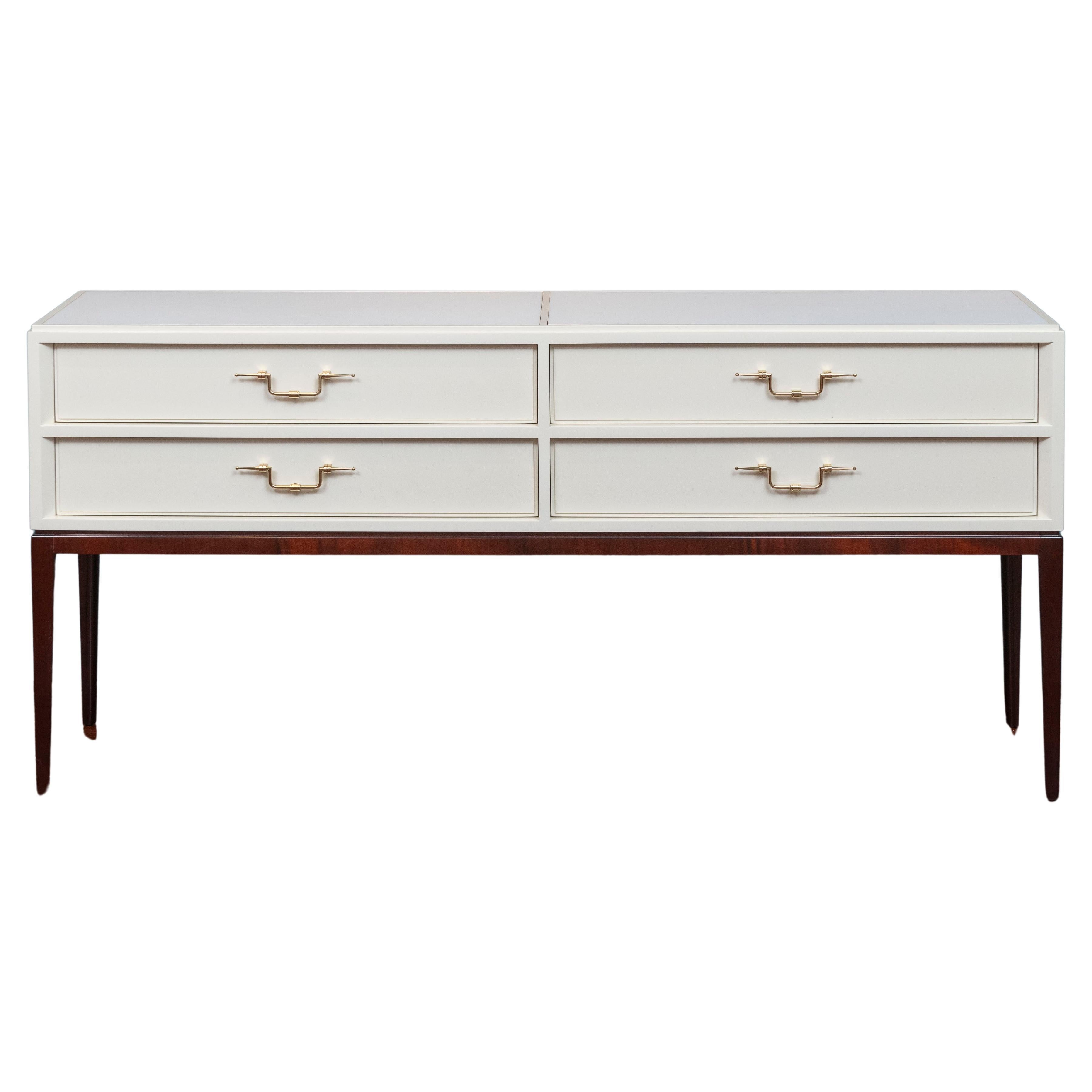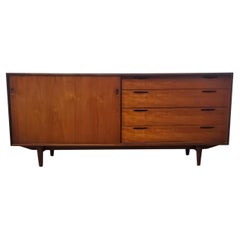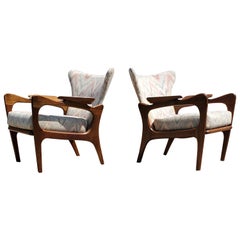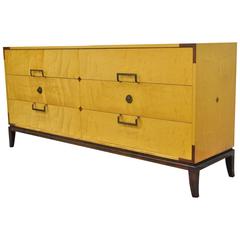
Tommi Parzinger for Parzinger Originals Dresser/Chest
View Similar Items
Tommi Parzinger for Parzinger Originals Dresser/Chest
About the Item
- Creator:Tommi Parzinger (Maker, Designer)
- Dimensions:Height: 32.75 in (83.19 cm)Width: 68.5 in (173.99 cm)Depth: 20 in (50.8 cm)
- Style:Mid-Century Modern (Of the Period)
- Place of Origin:
- Period:
- Date of Manufacture:1960s
- Condition:Wear consistent with age and use. Piece is in original vintage condition. There are a few small nicks and light scuffs.
- Seller Location:Middlesex, NJ
- Reference Number:1stDibs: LU108049768641
Tommi Parzinger
German furniture designer Tommi Parzinger brought high-style modernism to the forefront. Taking a vivid, stylized approach to mid-century furniture, many of his works feature boldly colored lacquers and offbeat finishes that make his pieces stand out among the works of his peers. Despite his uniquely progressive vision, Parzinger showed equal expertise in producing fine, traditional furnishings.
Born in Munich, Parzinger moved to New York City in 1932. He began his practice in the United States by designing for the Manhattan style trailblazer Rena Rosenthal. In 1939, he established his first company, which split its focus between handcrafted silver household items — such as tea sets and barware — and home furnishings, like dining tables and cabinets. In his first year in business, Parzinger exhibited several pieces of furniture at the 1939 New York World’s Fair.
A master craftsman, Parzinger sought out the most exceptional materials for his furniture, employing the finest woods — like mahogany and walnut — as well as including custom brass hardware and pewter inlays.
His silver works presented an elevated level of style and grace. A November 1939 article in LIFE magazine described Parzinger as “the most creative original designer of silverware in the United States.”
While he was still running his own business — creating 12 to 30 new designs each year — Charak Furniture Company appointed Parzinger as its head of modern furniture design. He modernized Charak’s design approach from a more traditional form to a mid-century modern style.
In the mid-1960s, Parzinger stopped designing furniture, turning his company over to his friend Donald Cameron. He shifted his attention to paintings, which he created until his death in 1981.
On 1stDibs, find a broad selection of vintage Tommi Panzinger tables, lighting, storage pieces and more.
- Arne Vodder Teak Sideboard for Sibast DenmarkBy Arne VodderLocated in Middlesex, NJArne Vodder Teak Sideboard for Sibast DenmarkCategory
20th Century Danish Mid-Century Modern Credenzas
MaterialsTeak
- Ib Kofod-Larsen Teak CredenzaBy Ib Kofod-LarsenLocated in Middlesex, NJIb Kofod-Larsen teak credenza.Category
Mid-20th Century Danish Mid-Century Modern Credenzas
MaterialsTeak
- Adrian Pearsall for Craft Associates Lounge ChairsBy Adrian PearsallLocated in Middlesex, NJAdrian Pearsall for Craft Associates lounge chairs.Category
20th Century North American Mid-Century Modern Side Chairs
MaterialsUpholstery, Walnut
- Adrian Pearsall for Craft Associates Gondola SofaBy Adrian PearsallLocated in Middlesex, NJAdrian Pearsall for Craft Associates Gondola sofa.Category
20th Century American Mid-Century Modern Sofas
MaterialsFabric, Walnut
- Angelo Mangiarotti Table Lamp for Iter ElettronicaBy Angelo MangiarottiLocated in Middlesex, NJAngelo Mangiarotti Table Lamp for Iter ElettronicaCategory
20th Century Italian Mid-Century Modern Table Lamps
MaterialsOpaline Glass
- Leo Lionni Original No. 1 of 6 Sculpture the "Giraluna" from Parallel BotanyBy Leo LionniLocated in Middlesex, NJThe giraluna is a spectral plant entity from Leo Lionni's Classic alternate universe textbook Parallel Botany. About the Sculpture: The Giraluna This elusive and capricious plant is the Dream Queen of parallel botany. Hydendorp, quite rightly, does not hesitate to define it as the "most parallel of plants, most plantlike of the parallels," and in so doing he stresses not so much its physiognomic oddnesses as the disconcerting normality of its shape. "If we were in the jungle," he writes, "and we found one blocking our way, we would not for an instant hesitate to hack it down with our machetes."1 But it will not be our good fortune to encounter it. If in reconstructions the Giraluna displays considerable plantness of form and an exact and convincing solidity, in its natural environment it can be perceived only as a nebulous interplay of glimmerings and empty spaces which alternate in the darkness and vaguely suggest where its outlines might be. (pl. XXIV) Its nocturnal presence, in fact, is manifested almost entirely in terms of the equivocal O'-factor of the moonbeams, which was discovered and measured a few years ago by Dennis Dobkin of the Point Paradise Observatory. This factor changes the light-shade ratio which normally defines volumes into a subtle interplay of lucencies and opacities, so that our perceptions, our basic sensorial habits conditioned by thousands of years of daytime life in the "solar key," would need complete readjustment and indeed reversal in order to come to terms with it. Daylight isolates objects, bestowing a noisy Meaning on all the odds and ends in the world. But night takes everything away except the very soul of things: a black light, a transparent darkness, a secret we cannot grasp. During the long night of the Erocene era man caught a glimpse of the Giraluna rising mysteriously in its barren landscape. Presolar man imagined himself the child of the Moon. In her lap he had known the comfort of the life, silent torpor of the night, and by her light he had seen silver pearls lie weightlessly upon the coronas of the first great flowers. But he left us only a few enigmatic signs of all this: the Feisenburg cave, the petrified bones in the Ahmenstadt tumulus, the Boergen Cup. Paradoxically enough, all that we do in fact know of his presence in that landscape comes to us from our study of his nocturnal vegetation, Around the middle of the Erocene era, when the flowers of night were fading away in the light of a new dawn, man saw that outlines and colors were slowly hardening. Thus he discovered the stone-hard world of day, and learned to be the child of both Sun and Moon, of Amnes and Ra, of Disarm and Karak, of Nemsa and Taor. The "crawling stones" of Yorkshire, the stele of Tapur, the graffiti of Klagenstadt, these have preserved for us the nearly obliterated images of the two divinities who from the center of their temples drew the design of the universe. But the Sun was not long in attaining absolute power over everything in the world. "O Ra, o Amno Ra our benefactor, glowing and flaming! Gods and men bow down before you, for you are their creator and their only Lord." Such was the prayer of Amresh, High Priest of Egypt. And a new vegetation, outspoken and exuberant, appeared on the earth, and made the bright leaves dance in the morning breeze. Night soon became no more than a dark corridor joining one day to another, a place of visions and memories, a storehouse of words and images. It became a secret refuge where the vanished flowers could once more flaunt their coronas to the Moon. And thousands of years later the black flowers of that distant night-Giraluna, Lunaspora, Solea argentea-were born from seeds hidden deep in a soil rich with legends and stories. If our knowledge of the Giraluna is today reasonably complete and detailed this is due to the industry and scholarship of Professor Johannes Hydendorp of the University of Honingen, who has collected and collated all known facts and kept his records abreast of the latest developments. Our historical and geographical information comes from the most varied sources: legends and folk tales handed down from generation to generation, accounts given by explorers, anthropologists, and paleontologists, and of course the more recent testimony of botanists such as Heinz Hornemann and Pierre Maessens. Source: Sivatherium. narod .edu About Sculpture: Leo Lionni is best known today for his children's books: Little Blue and Little Yellow; Frederick—the one about the mouse who gathers poems while his family is harvesting seeds for the winter—Swimmy the Fish. Of course the children don't remember his name, but to parents and grandparents, the ones who actually do the reading, he is something of a celebrity. Most people don't realize that Lionni is also one of the 20th-century's most influential graphic designers. Within that field, he is a legend. In fact, he didn't start doing children's books until he had left the world of advertising, teaching, and design to allow more time for contemplation and for art. Little Blue and Little Yellow (1959) began as an improvised entertainment for bored grandchildren. What can you do with a few scraps of colored paper and a lot of imagination ? Make the first best-selling children's book illustrated with abstract art. Before that his work as design director for Olivetti Corporation of America and the art director of Fortune magazine, the co-founder of the Aspen...Category
20th Century American Mid-Century Modern Abstract Sculptures
MaterialsBronze, Steel
- Tommi Parzinger for Parzinger Originals Maple & Mahogany Dresser Chest CredenzaBy Tommi ParzingerLocated in Philadelphia, PARare Mid-Century Modern Tommi Parzinger for Parzinger Originals Maple and Mahogany Inlaid Dresser / Credenza. Item features six dovetail constructed drawers, mahogany plinth, brass P...Category
Vintage 1960s American Mid-Century Modern Dressers
MaterialsMahogany, Maple
- Tommi Parzinger Credenza for Parzinger OriginalsBy Tommi ParzingerLocated in San Francisco, CATommi Parzinger design Chinese red lacquer credenza with polished brass mounted hardware. High quality construction and attention to details, newly lacquered in the original color ...Category
Vintage 1950s American Mid-Century Modern Credenzas
MaterialsBrass
- Tommi Parzinger Tall Chest or Dresser for Charak ModernBy Tommi Parzinger, Charak Furniture CompanyLocated in St.Petersburg, FLA tall chest of drawers designed by Tommi Parzinger for Charak Modern. Two piece cabinet with lower portion consisting of three generous sized drawers. Above sits a cabinet with door...Category
Vintage 1950s American Mid-Century Modern Cabinets
MaterialsBrass
- Tommi Parzinger Mahogany DresserBy Tommi ParzingerLocated in New York, NYSpectacular mid-century Mahogany dresser designed by Tommi Parzinger. Dresser has 6 ample drawers with brushed brass engraved pulls and carved and gil...Category
Mid-20th Century American Mid-Century Modern Dressers
MaterialsMahogany
$21,000 Sale Price19% Off - Custom Tommi Parzinger Mahogany ChestsBy Tommi ParzingerLocated in New York, NYCustom ordered pair chest of drawers in solid mahogany with iconic brass pulls all designed by Tommi Parzinger/Parzinger originals. Each chest ha...Category
20th Century American Mid-Century Modern Dressers
MaterialsBrass
$19,500 Sale Price / item59% Off - Tommi Parzinger for Parzinger Originals Bleached Elm Armoire or Wardrobe CabinetBy Tommi ParzingerLocated in Philadelphia, PAVery rare Tommi Parzinger for Parzinger Originals two-door bleached elm gentleman’s dresser with fitted interior. Item features swing doors, five dovetail constructed drawers, clean ...Category
Vintage 1960s American Mid-Century Modern Cabinets
MaterialsElm

